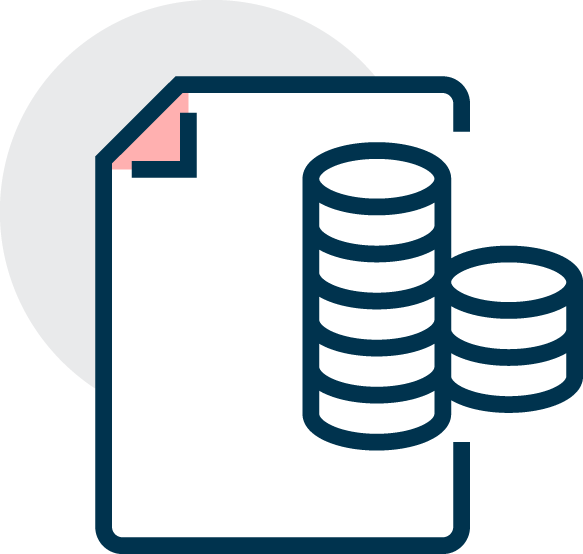SYNOPSIS
- A home requires a large capital outlay.
- It makes sense to take a home loan to meet the purchase value of the home.
- Your home loan is repaid through equated monthly instalments, or EMIs.
- Each EMI is made up of interest payable on your loan and part principal repayment.
- Taking a home loan during your Twenties or Thirties gives you sufficient time to pay off your loan before retirement.
- How you time your monthly EMI payments plays an important role in your cash flows.
- Make sure you have an emergency fund so that your EMI payments are not impacted in case you face such a situation.
- It’s advisable to limit your loan payment to a maximum of 40% of your monthly income.
Being a homeowner is one of the most fulfilling experiences for most people. Since this requires a large capital outlay, it makes sense to take a home loan to meet the purchase value of the home. This not only does away with having to wait for years to accumulate the necessary amount to purchase your home, a home loan also provides attractive tax benefits.
Now that you are convinced about the benefits of taking a home loan, what about home loan repayment, you may ask. How do home loan repayments work? There are a number of home loan repayment options that you could consider. However, before we discuss this, let’s understand how home loans are repaid. Your home loan is repaid through equated monthly instalments, or EMIs. This is a fixed amount you need to pay your lender each month till you complete repaying your home loan. Your EMIs will be due on a fixed date each month (for example, say 3rd of each month). You need to pay EMIs throughout the loan tenure till you have paid off your home loan.
Each EMI is made up of interest payable on your loan and part principal repayment.Although the EMI remains a fixed sum throughout the loan tenure, during the initial years, the interest component of the EMI is higher (and the loan repayment component is lower). When you are closer to completing your home loan repayment, the situation reverses, i.e. the principal repayment component of your EMI is higher while the interest component becomes lower.

Here is an example to see how EMI is computed and the break up between interest and principal (with interest reducing over the years, while principal repayment increasing):
Let’s say you have taken a loan of Rs. 25 lakh for a tenure of 20 years at 8.6% interest. Your EMI will be Rs. 21,854. Here is break up of your EMI over the 20-year loan tenure.
| Year | Opening Balance | EMI*12 | Interest paid yearly | Principal paid yearly | Closing Balance |
| 1 | 2,500,000 | 262,249 | 213,092 | 49,156 | 2,450,844 |
| 2 | 2,450,844 | 262,249 | 208,694 | 53,555 | 2,397,289 |
| 3 | 2,397,289 | 262,249 | 203,903 | 58,346 | 2,338,943 |
| 4 | 2,338,943 | 262,249 | 198,682 | 63,567 | 2,275,376 |
| 5 | 2,275,376 | 262,249 | 192,995 | 69,254 | 2,206,122 |
| 6 | 2,206,122 | 262,249 | 186,799 | 75,450 | 2,130,672 |
| 7 | 2,130,672 | 262,249 | 180,048 | 82,201 | 2,048,471 |
| 8 | 2,048,471 | 262,249 | 172,693 | 89,556 | 1,958,915 |
| 9 | 1,958,915 | 262,249 | 164,680 | 97,568 | 1,861,347 |
| 10 | 1,861,347 | 262,249 | 155,951 | 106,298 | 1,755,049 |
| 11 | 1,755,049 | 262,249 | 146,440 | 115,809 | 1,639,240 |
| 12 | 1,639,240 | 262,249 | 136,078 | 126,170 | 1,513,069 |
| 13 | 1,513,069 | 262,249 | 124,790 | 137,459 | 1,375,610 |
| 14 | 1,375,610 | 262,249 | 112,491 | 149,758 | 1,225,852 |
| 15 | 1,225,852 | 262,249 | 99,092 | 163,157 | 1,062,695 |
| 16 | 1,062,695 | 262,249 | 84,494 | 177,755 | 884,940 |
| 17 | 884,940 | 262,249 | 68,590 | 193,659 | 691,280 |
| 18 | 691,280 | 262,249 | 51,262 | 210,986 | 480,294 |
| 19 | 480,294 | 262,249 | 32,385 | 229,864 | 250,430 |
| 20 | 250,430 | 262,249 | 11,819 | 250,430 | 0 |
Let’s now consider your home loan repayment options.
 The earlier the better
The earlier the better
Taking a home loan during your 20s or 30s gives you sufficient time to pay off your home loan before retirement. Besides, you have the option for a longer tenure home loan, which, in turn, implies a lower EMI for the same loan amount.
 Time your EMI
Time your EMI
How you time your monthly EMI payments plays an important role in your cash flows. If you are employed, your EMI should coincide with your salary date.If you are self-employed, make sure you have the necessary funds in your bank account to meet the EMI payment. Ensuring timely payment of your EMI helps you escape any extra charges arising out of delayed payments and protects your credit score.
 Prepare for emergencies
Prepare for emergencies
Your financial plan should necessarily help you accumulate an emergency fund which is immensely useful in case of medical emergencies such as hospitalization, accident, etc. This will ensure that the funds you have kept aside for your EMI payments are not impacted in case you face such a situation.
 Limit your EMI
Limit your EMI
If you have any other loans that you are servicing, e.g. car loan, personal loan, etc., the EMI computed from the home loan EMI calculator should be added to your other loan EMI payments to assess how much of your total earnings are earmarked for loan repayments. It’s advisable to limit your loan payment to a maximum of 40% of your monthly income.
Your home loan repayment can be made easy, stress-free and convenient if you simply plan your cashflows smartly and stick with it.
Also Read - Home Loan Process
Home calculations made easy to help you plan your home
MISSED CALL
Give us a MISSED CALL for New Home Loan
- 09289200017


































